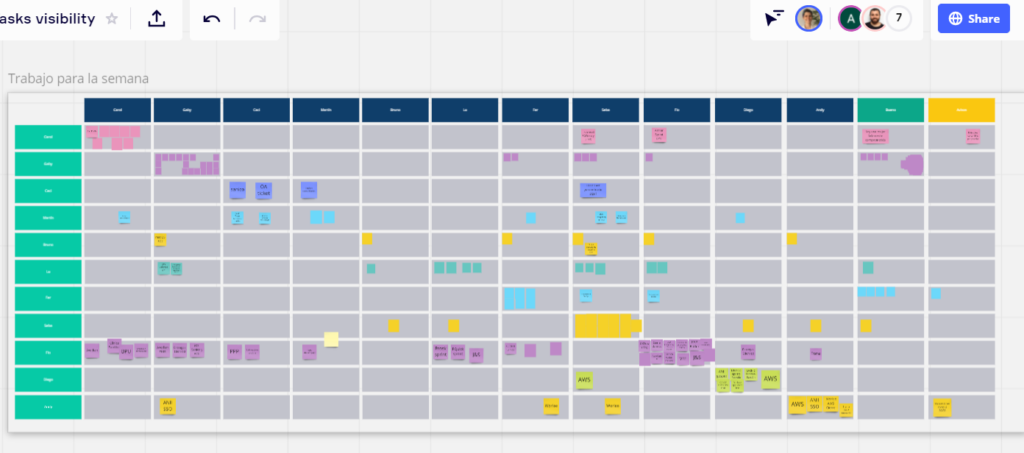When I was writing this title for a moment I thought: mmm this seems like a contradiction. If teams are self-organizing, why should we have to encourage their self-organization? ?
But I immediately counter-argued, “Of course we have to encourage it! And even more so if your team is working remotely, from home.
A good team coach makes sure that things happen, and among these things are the necessary spaces for the team to self-organize. Good things do not happen by magic, there is a context for them to happen.
The organization requires communication and visibility, which in pandemic times, where we are not all physically in the same place, is not so easy to achieve.
With this objective of improving communication and visibility, we have developed a set of dynamics that allow us to share the planned work of the entire team from different perspectives, so that we can collaborate and identify dependencies in a timely manner .
Here are 3 dynamics for the organization of remote teams that we do at BigCheese:
1 – NOW / NEXT / LATER
We have a virtual bulletin board where we plan the week and where everyone classifies their tasks in 3 categories:
NOW: what is your urgency, and if anyone can help.
NEXT: What tasks will you take on next, so as to encourage collaboration or knowledge sharing if necessary.
LATER: Which tasks we are leaving for later, with lower priority (for now), so that if someone else is waiting for one of those tasks it is visible that they are not planning to take it yet or give room to talk to change priorities.

For this we use a template from MIRO.com.
2 – NAVAL BATTLE
Also at Miro, we have a matrix with team members. All members are in the rows and all members are in the columns. So if Lucia has to work on something together with Sebastian, she will place her card in the [LU, SEBA] box.
We take a few minutes for everyone to post what dependencies or collaborative work they have with the rest of the team, and then we do a conversational tune-up.
This view gives a complementary vision to the previous one, since it allows us to visualize very easily if any member of the team is being a bottleneck, for example because many have “dependencies” with him.

3 – FIND THE 5 PARALLEL CONVERSATIONS
How do we talk to about 10 people at the same time on the same tool?
We achieved this thanks to Discord, where we mapped audio rooms simulating our physical meeting rooms in the office. With just 1 click we can move to another room and start a chat with other team members.

In this way we achieve a space-time focused on collaboration and visibility with the rest of the team. Having this communication scheduled in our calendar week by week greatly reduces the time we “interrupt” each other, and this allows us to work in a more focused way.
And you… what dynamics are you applying for the organization of your remote teams? I hope I have been able to inspire you to improve the communication of the most valuable part of your company, your team.








